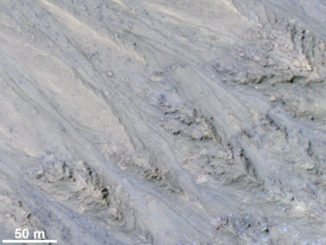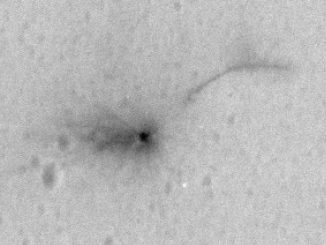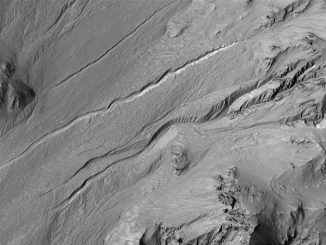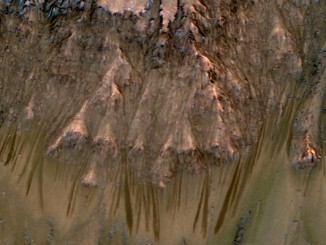
HiRISE


First aerial colour photo of Mars rover’s “hole-in-one” landing site
NASA has released the first high-resolution aerial colour image of the Opportunity rover’s landing site on a sprawling Martian plain, where the airbag-cushioned robot fortuitously rolled into a Eagle Crater in January 2004, putting its scientific instruments face-to-face with a block of sedimentary rock that gave ground teams confirmation Mars was once a warmer, wetter, and habitable planet.



Mars gullies likely not formed by liquid water
New findings using data from NASA’s Mars Reconnaissance Orbiter show that gullies on modern Mars are likely not being formed by flowing liquid water. This new evidence will allow researchers to further narrow theories about how Martian gullies form, and reveal more details about Mars’ recent geologic processes.

Ten years of discovery by NASA’s Mars Reconnaissance Orbiter
On 10 March 2006, NASA’s Mars Reconnaissance Orbiter (MRO) entered into orbit around the Red Planet. A decade later, with its six science instruments all still operating, MRO has delivered huge advances in knowledge about Mars, revealing in unprecedented detail a world that held diverse wet environments billions of years ago and remains dynamic today.

Martian starburst spiders
Mars’ seasonal cap of carbon dioxide ice has eroded many beautiful terrains as it sublimates (goes directly from ice to vapour) every spring. In the region where the High Resolution Imaging Science Experiment (HiRISE) camera on NASA’s Mars Reconnaissance Orbiter took this image, we see troughs that form a starburst pattern.

Gullies on Mars sculpted by dry ice rather than liquid water?
Mars’ gullies may be formed by dry ice processes rather than flowing liquid water, as previously thought. This is the conclusion of a study conducted by two French scientists published in Nature Geoscience. They show that, during Martian late winter and spring, underneath the seasonal CO2 ice layer heated by the Sun, intense gas fluxes can induce gas-lubricated debris flows which look like water-sculpted gullies on Earth.

NASA confirms evidence that liquid water flows on today’s Mars
New findings from NASA’s Mars Reconnaissance Orbiter (MRO) provide the strongest evidence yet that liquid water flows intermittently on present-day Mars. Using an imaging spectrometer on MRO, researchers detected signatures of hydrated minerals on slopes where mysterious darkish streaks that appear to ebb and flow over time are seen on the Red Planet.

